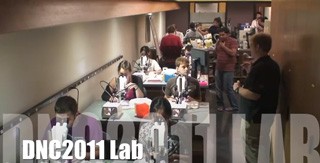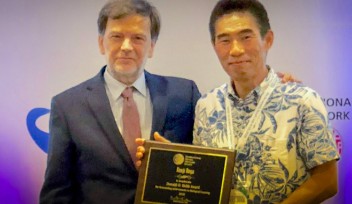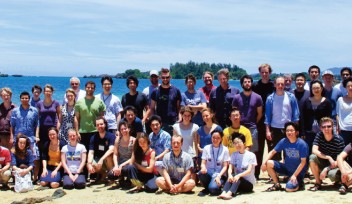DNC2011: Learning How the Brain is Built
Asked what she thought of OIST and the 2011 Developmental Neurobiology Course (DNC2011), lecturer Elke Stein (Yale University) said bluntly, “Wow and wow.” She added, “I wish there had been such opportunities in my postdoc days.” The DNC2011 was held from July 17th to 31st at the OIST Onna Campus and Seaside House. Fifteen lecturers, seven tutors, and twenty-eight students came from all over the world for an intensive course on what co-organizer Dr. David Van Vactor, Principal Investigator of the OIST Formation and Regulation of Neuronal Connectivity Research Unit, calls “the molecular machinery that makes neural circuitry possible.” DNC2011 is the second OIST Developmental Neurobiology Course, and like last year, the lecturers are all leaders in their fields, representing a wide array of nationalities, specialties, and backgrounds. For more information about lecturers and the course program, see the OIST2010 and OIST2011 websites.
Asked to distinguish developmental neurobiology from other brain sciences, Dr. Van Vactor used a musical metaphor: “Just as much of a violin’s sound is determined by how it is made, much about the brain is determined by how it developed.” Developmental neurobiology wants to understand the most fundamental details of the development of the brain and the nervous system as a whole. Dr. Van Vactor believes that “if a graduate student is thinking about going into neuroscience and understanding the brain, it is important that she think about how the brain is built.”
The two-week course started with a history of the field and then took students through a wide range of hands-on training and lectures. Most people know that the brain works because brain cells called neurons are transferring information between one another, but how does an organism put the right number and types of neurons in place to create a nervous system? How does it connect them so that they can process information? How do these factors affect behavior? In addition to addressing these and other issues, the DNC2011 gave students training in practical lab skills and technologies. At the end of the course, students learned about neuronal disease models so that they could consider how defects in the development or maintenance of the nervous system cause abnormality and disease.
Developmental Neurobiology is intrinsically interdisciplinary, bringing together disciplines like cell biology, developmental biology, neuroscience, imaging technology, molecular biology, genetics, electrophysiology, and behavior to understand what Dr. Van Vactor calls “the wet, messy details of how - biologically and mechanically - neural functionality is achieved.” Such an approach falls in line with OIST’s mission to create an interdisciplinary research environment.
Like many students, Dongnhu Thuy Truong from the University of Connecticut enjoyed the wide range of approaches taught in the course, saying that the DNC has given her a “completely different perspective” which she hopes will enable her to go from studying behavior to understanding what causes that behavior at the molecular level.
However, what most distinguishes the DNC2011 from previous OIST courses and most other conferences are the lab sessions in which experienced researchers gave students practical, real-time lab training with state-of-the-art instruments. The DNC2011 was the first OIST course in which students received a crash course in skills like “pinning” and “filleting” fly larvae, processing zebrafish embryos, using dyes and solutions, and operating a wide range of imaging equipment. Laura Mariani of Emory University was very happy that “Instead of just having a paper explained to me, I got to use a microinjector and do the science myself. You can go to a lot of places to hear someone lecture, but this is a good training experience because it will expose me to different lab techniques.”
Ms. Mariani was also impressed by the genuinely international composition of the DNC2011, observing that, “when you go to a science conference in the US, you end up meeting a bunch of Americans, but this is a truly international group here.” Dr. Akinao Nose, professor at the University of Tokyo and one of the DNC2011 organizers, explained his motivation: “These researchers are grad students and postdocs at the beginning of their careers, and I hope that some of them will consider moving into the field of developmental neurobiology. In particular, I hope that more Japanese will participate in the DNC so that they can get to know other young researchers from around the world.”
Asked his opinion of the course, lecturer Dr. Yuh Nung Jan (HHMI/ UCSF) commented, “beautiful setting, the students are very good, and they ask some very good questions. It has been a very good experience.”
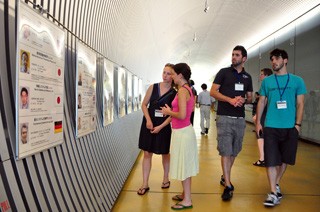
Participants look at the unit summaries in the Tunnel Gallery. |
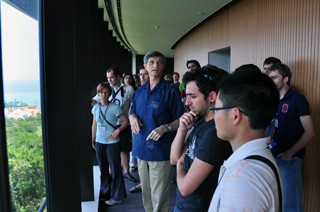
Executive Director Dr. Robert Baughman leads a tour of the facilities. |
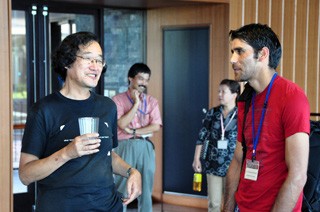
Lecturer Dr. Hitoshi Sakano of the University of Tokyo talks to a participant during lunch in the OIST cafe. |
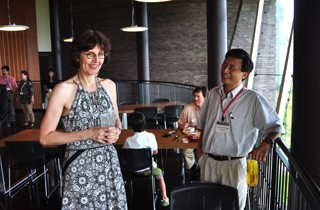
From left, Lecturers Dr. Elke Stein (Yale University) and Dr. Josh Huang (Cold Spring Harbor) |
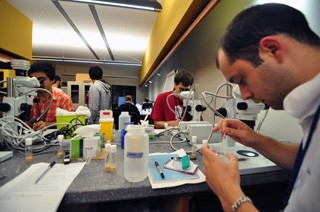
|
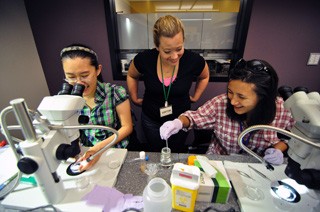
Tutor Dr. Jennifer Baughman (Harvard University) helping students during the hands-on lab session. |
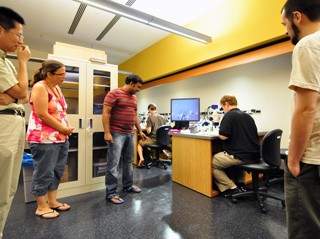
Organizer OIST Principal Investigator Dr. David Van Vactor demonstrates his skills at pinning and filleting fly larvae. |
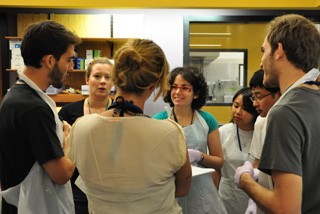
|
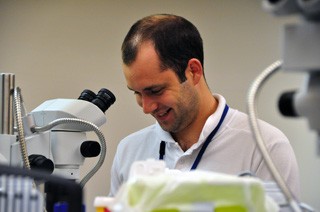
|
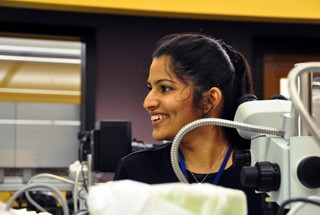
|
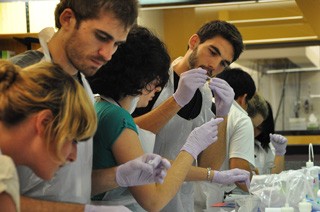
|
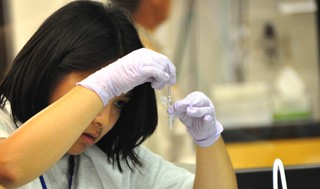
|
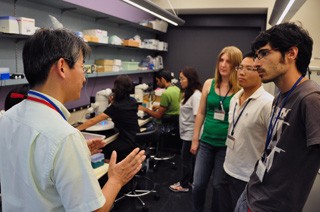
Organizer and OIST Principal Investigator Dr. Ichiro Masai teaches students how to handle zebra fish embryos. |
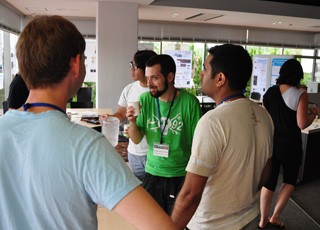
Participants talking over coffee during lectures on July 25th. |
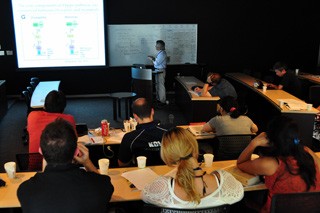
Dr. Yuh Nung Jan (HHMI/UCSF) lectures at Seaside House. |
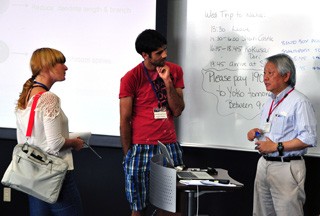
After his lecture, Dr. Jan answered questions from participants. |
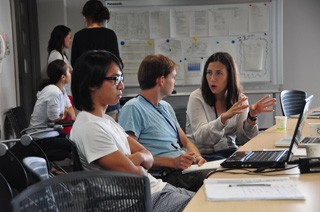
|
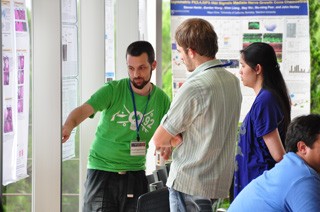
|
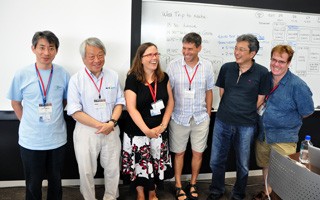
From left, Dr. Ichiro Masai (OIST), Dr. Yuh Nung Jan (HHMI/UCSF), Dr. Mary Ann Price (OIST), Dr. David Feldheim (Department of MCD Biology), Dr. Akinao Nose (University of Tokyo), and Dr. David Van Vactor (OIST/Harvard) |
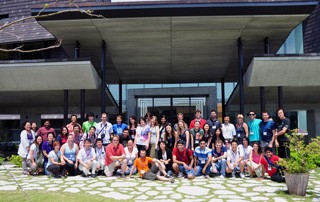
|
Specialty
For press enquiries, please contact media@oist.jp






